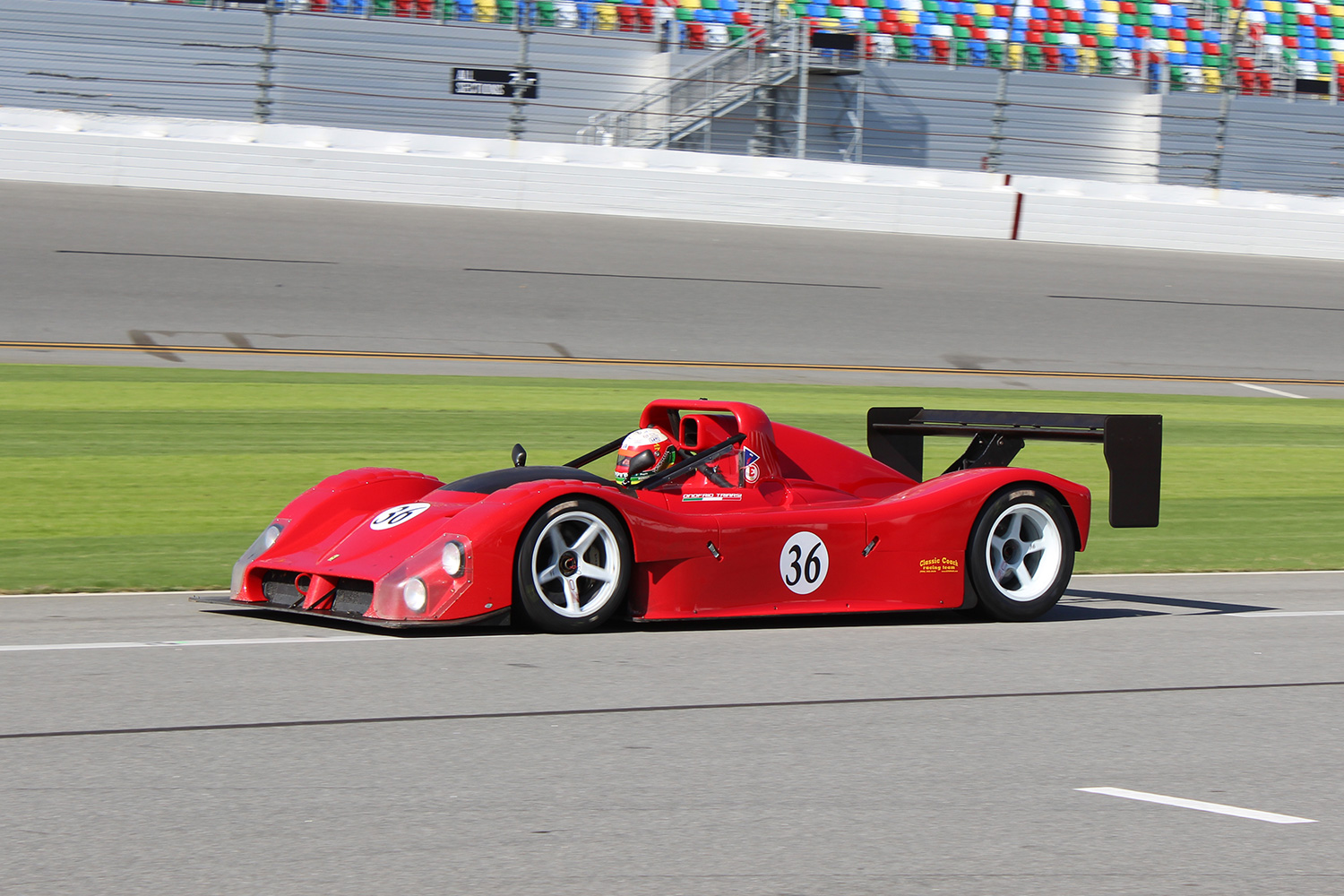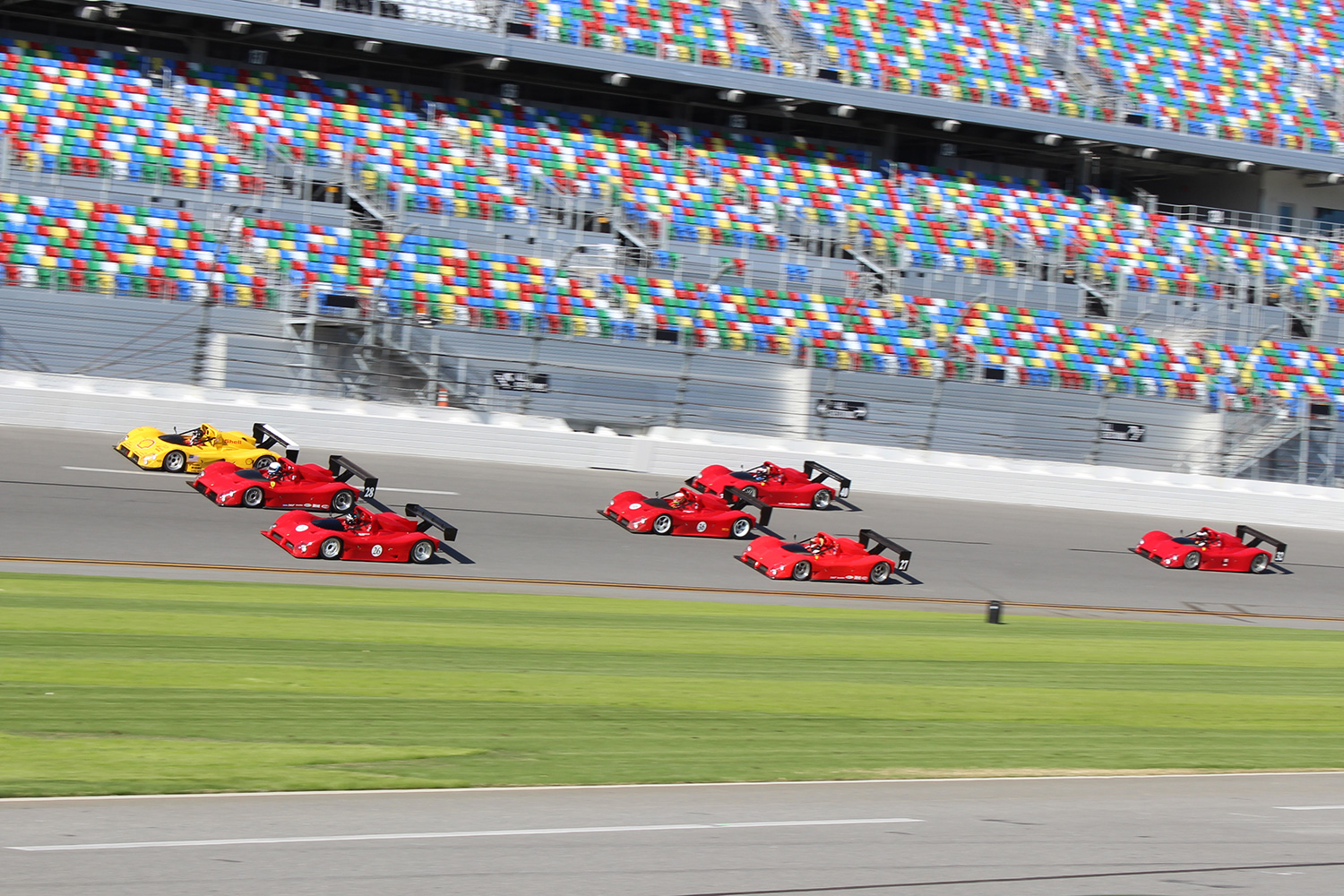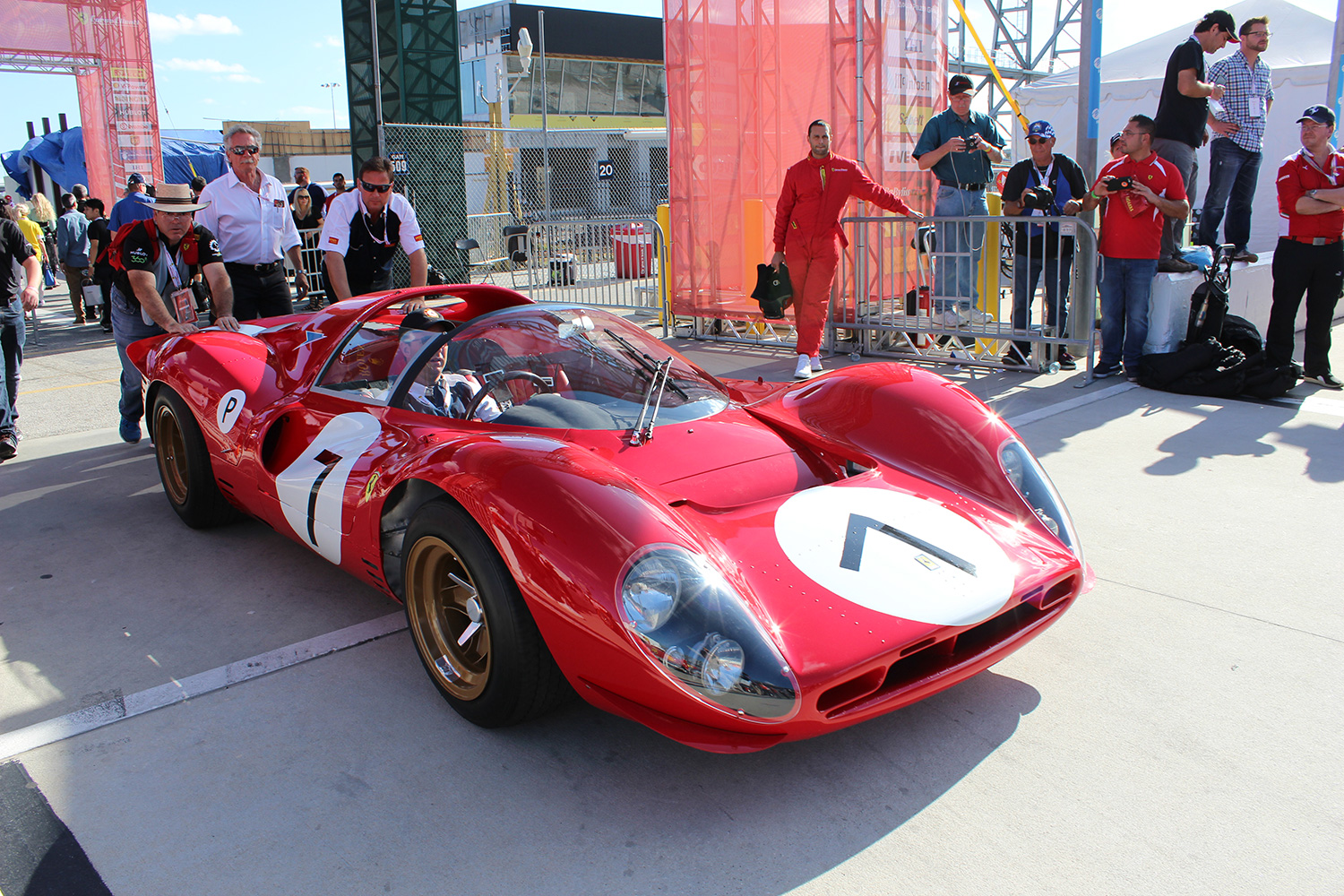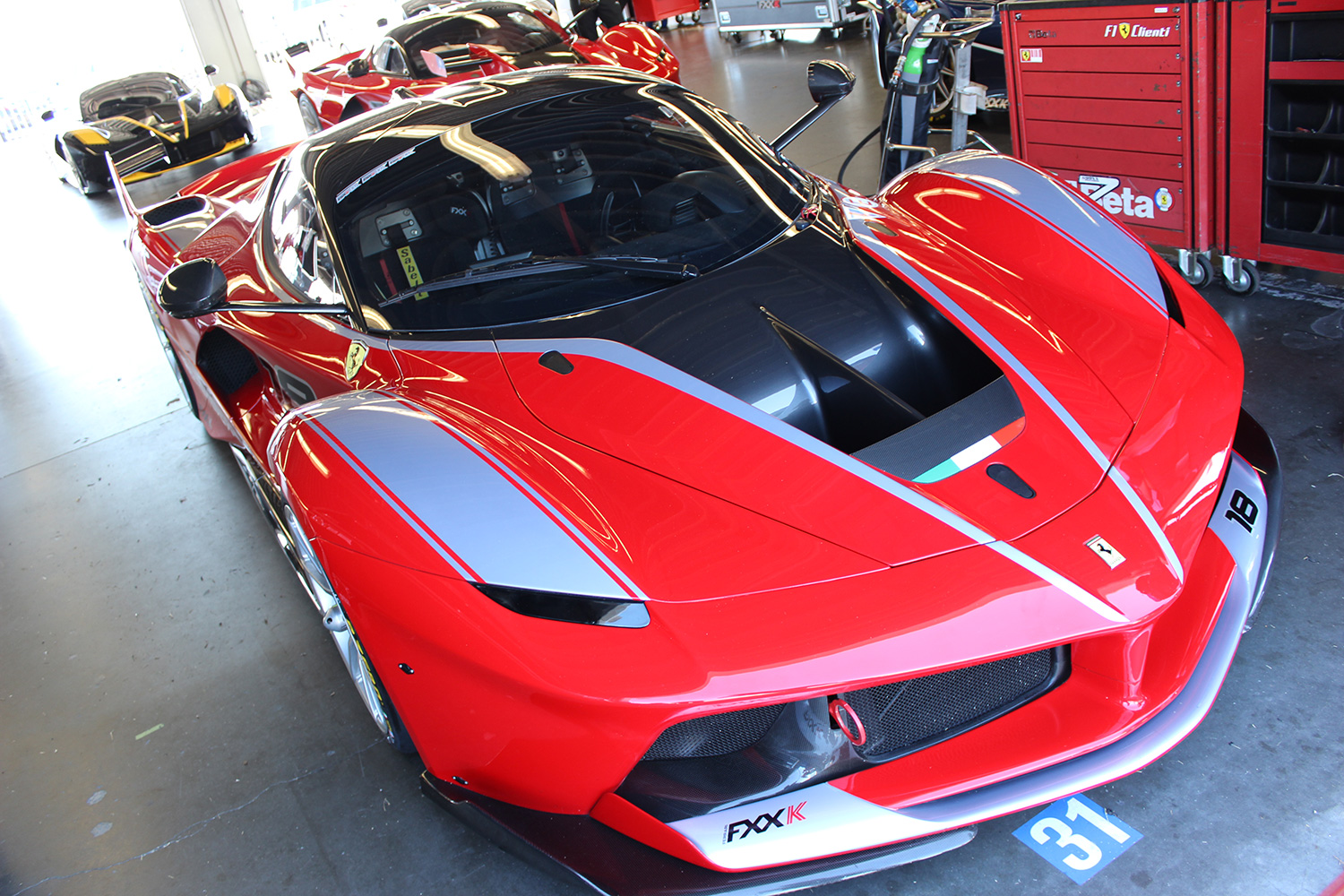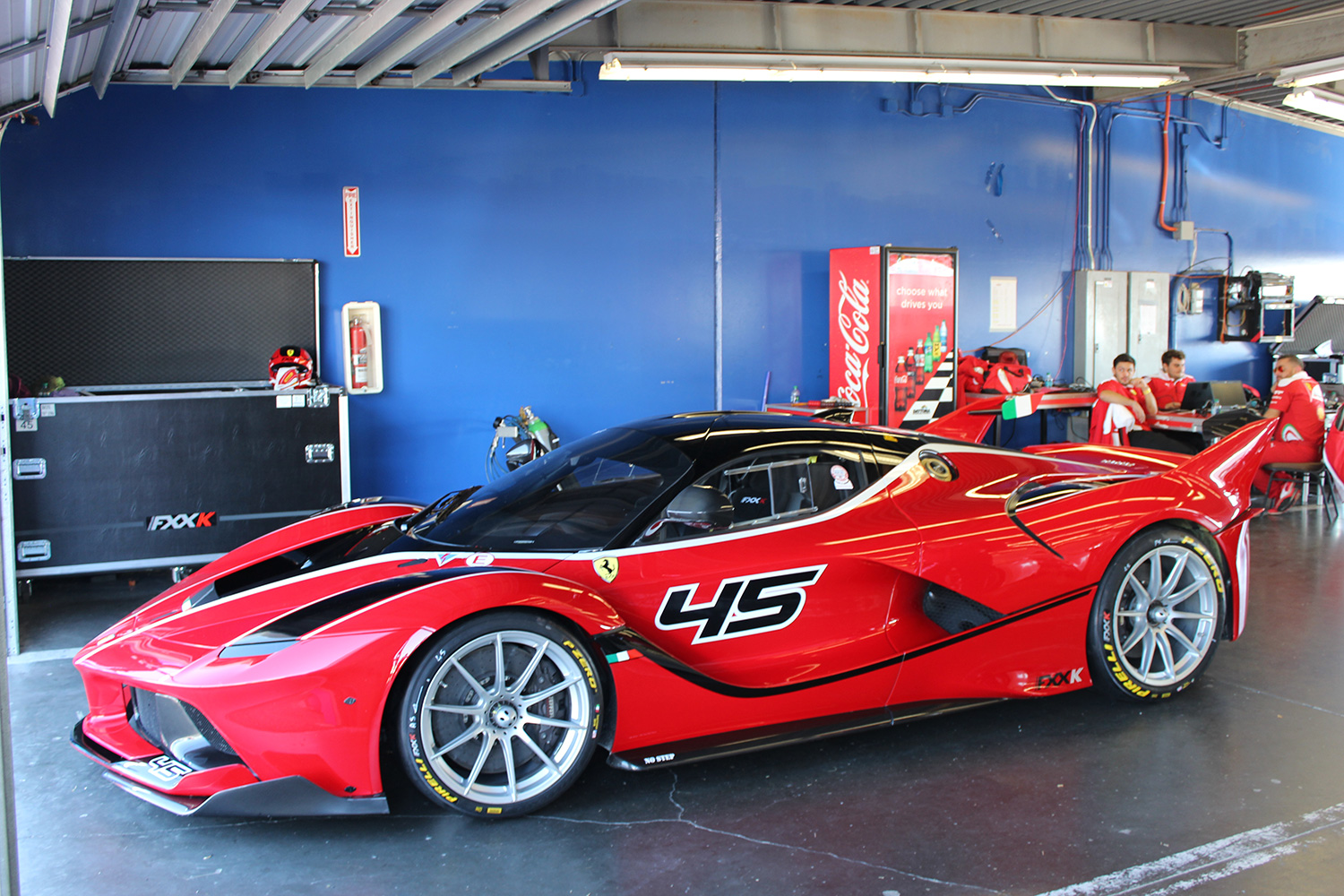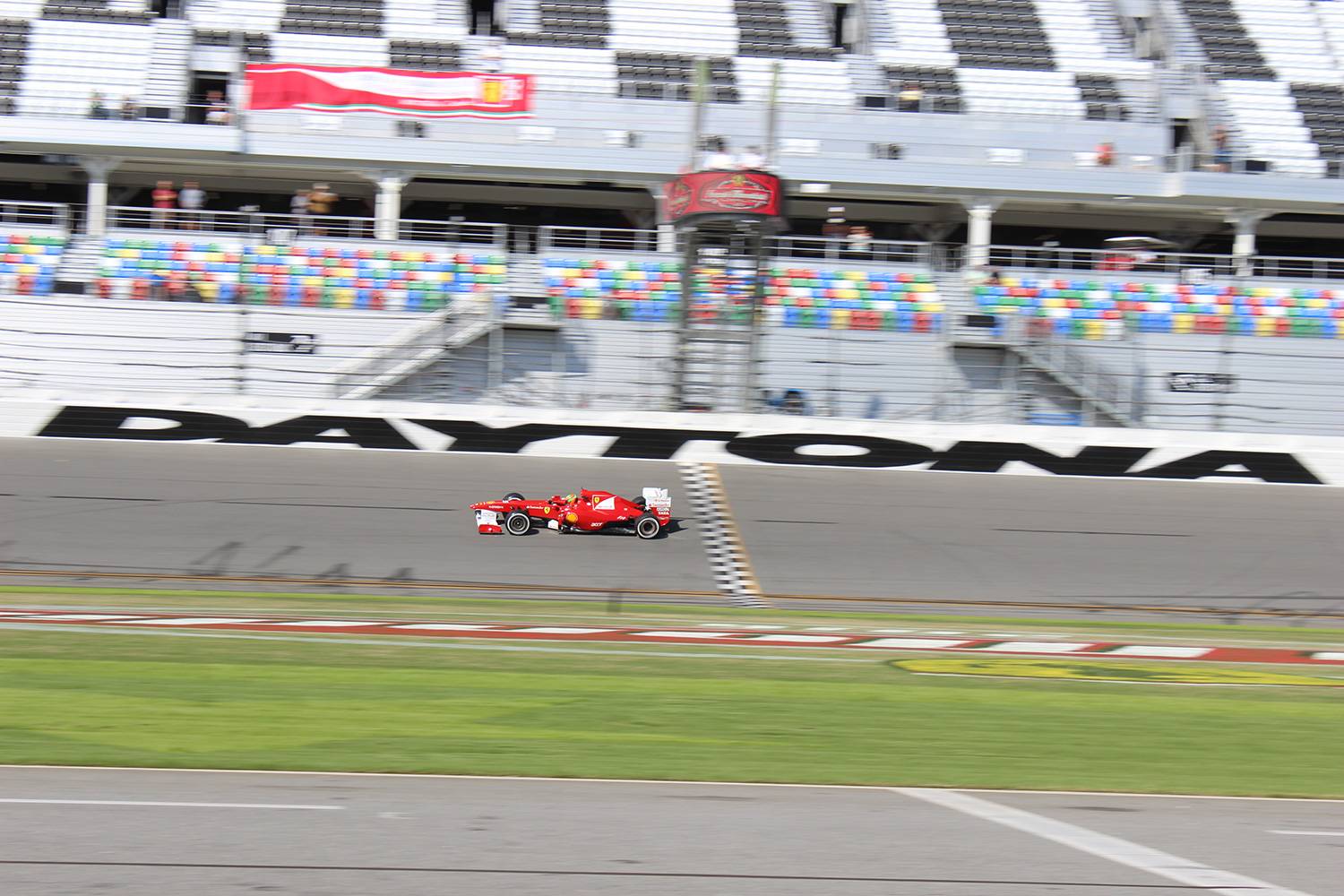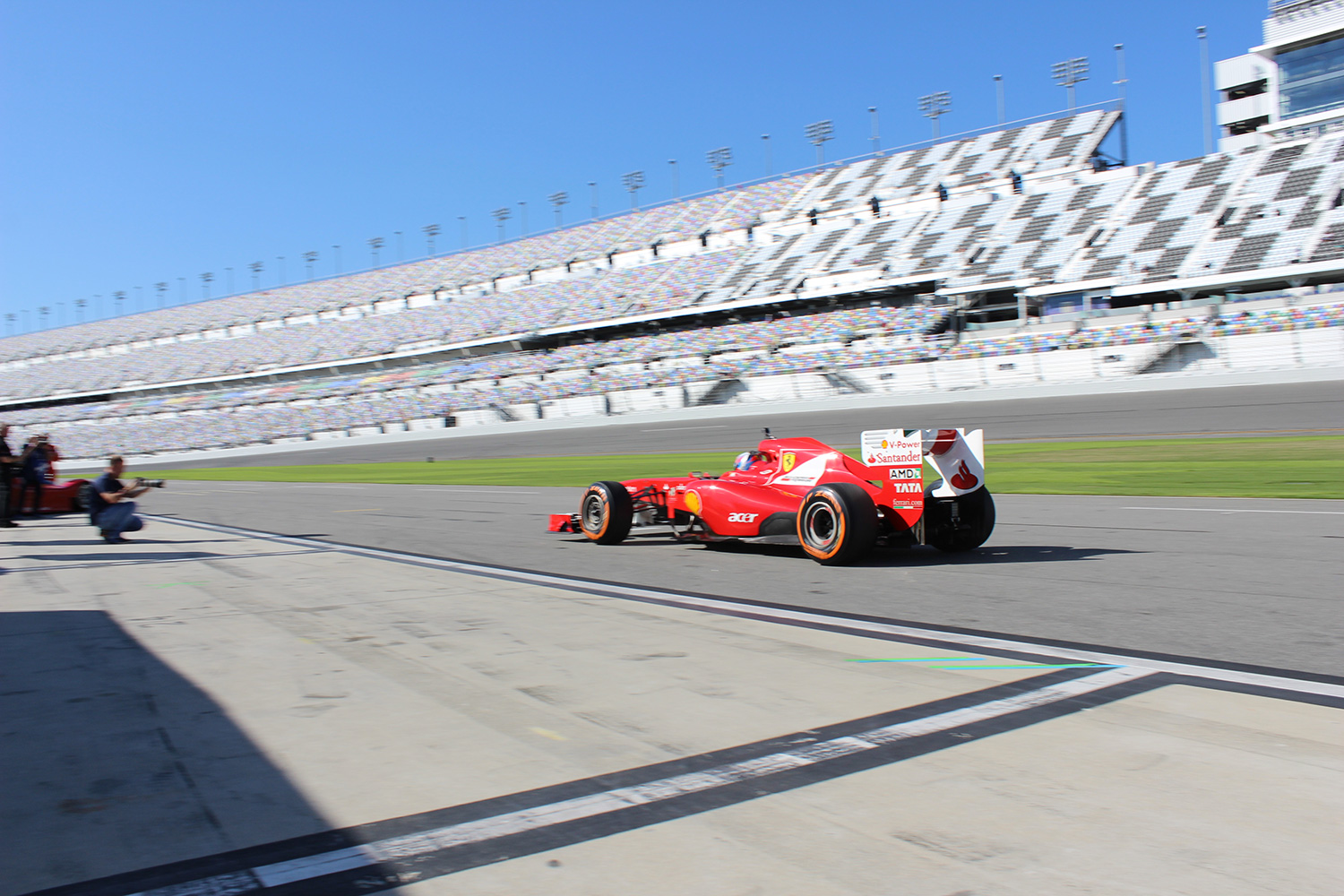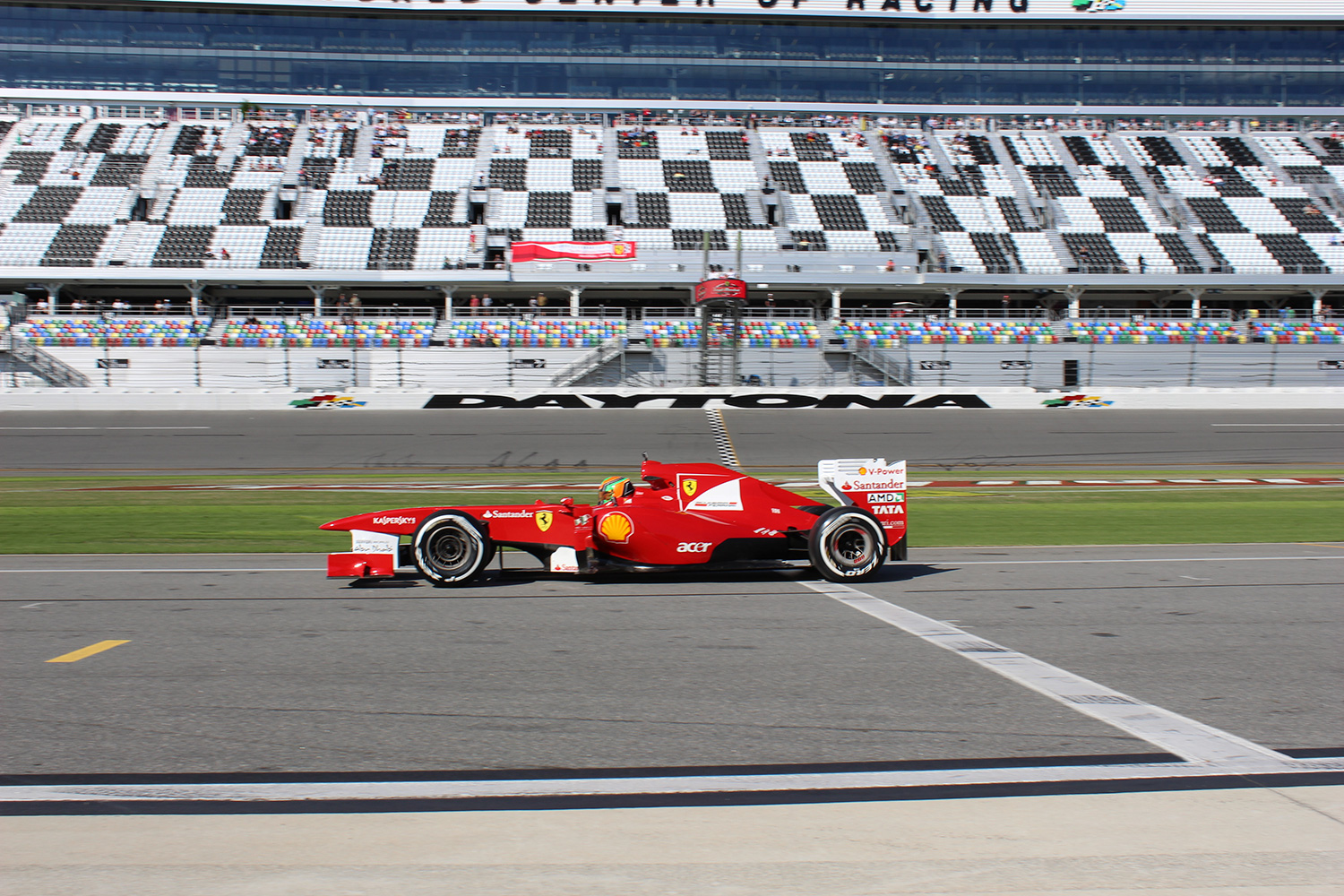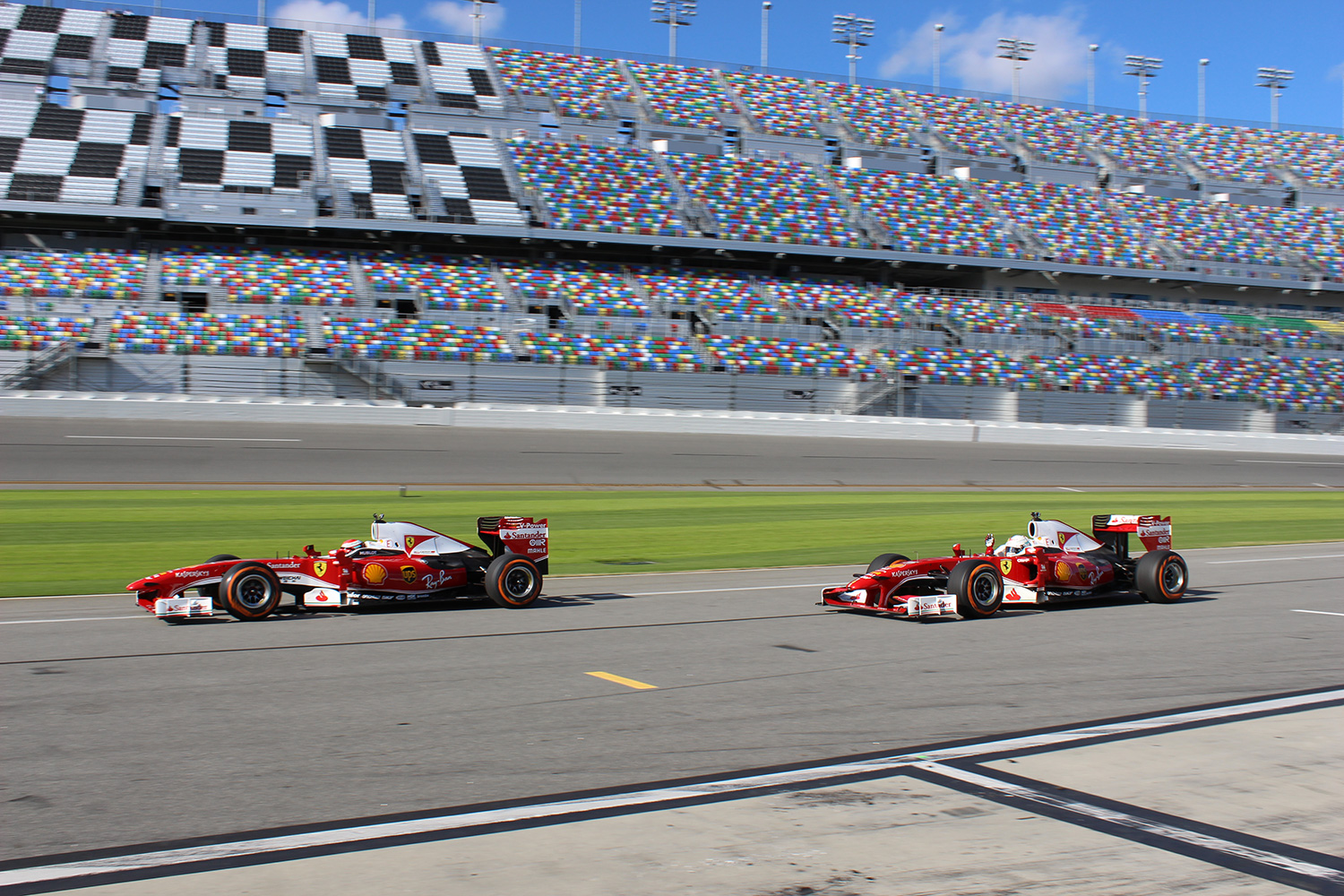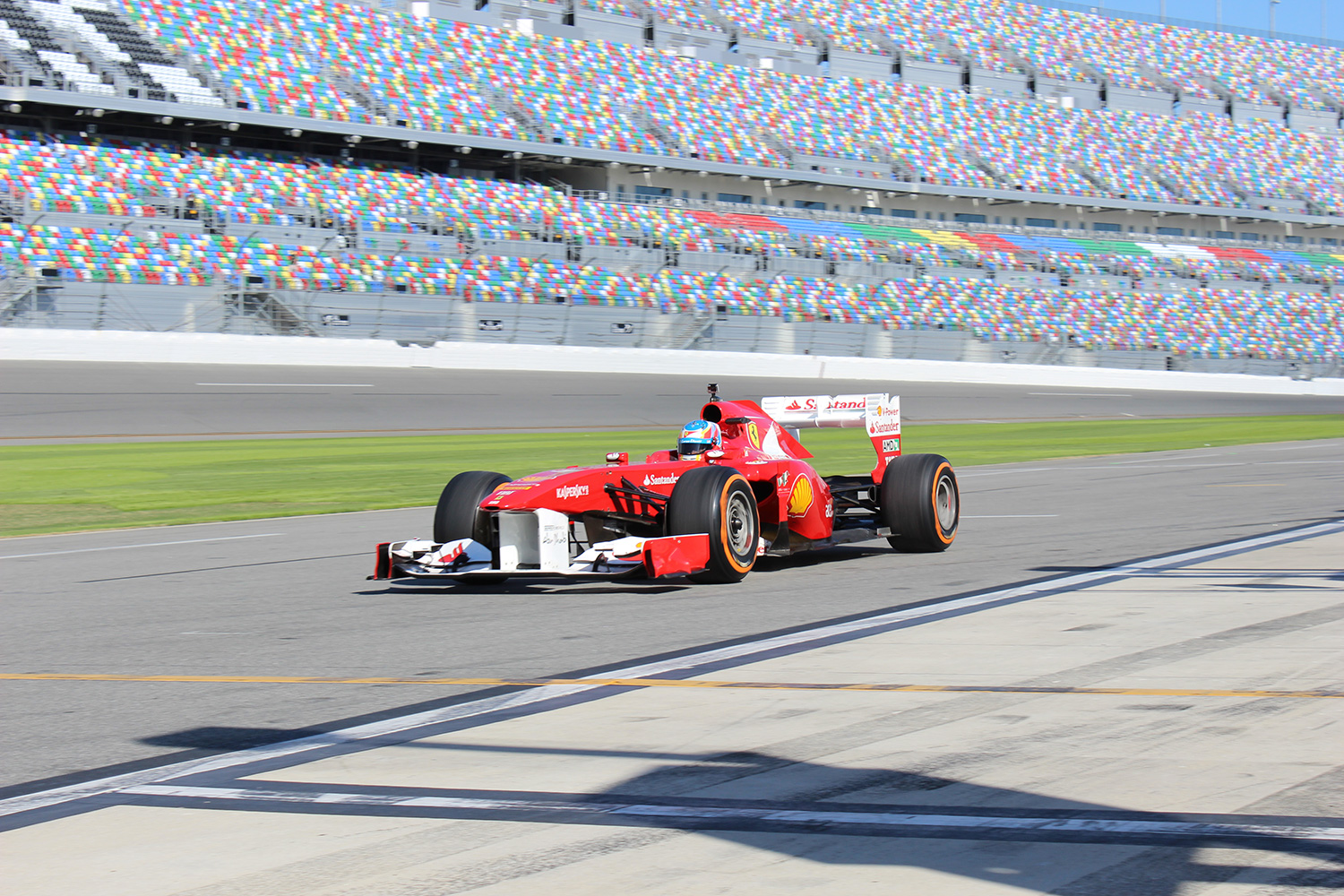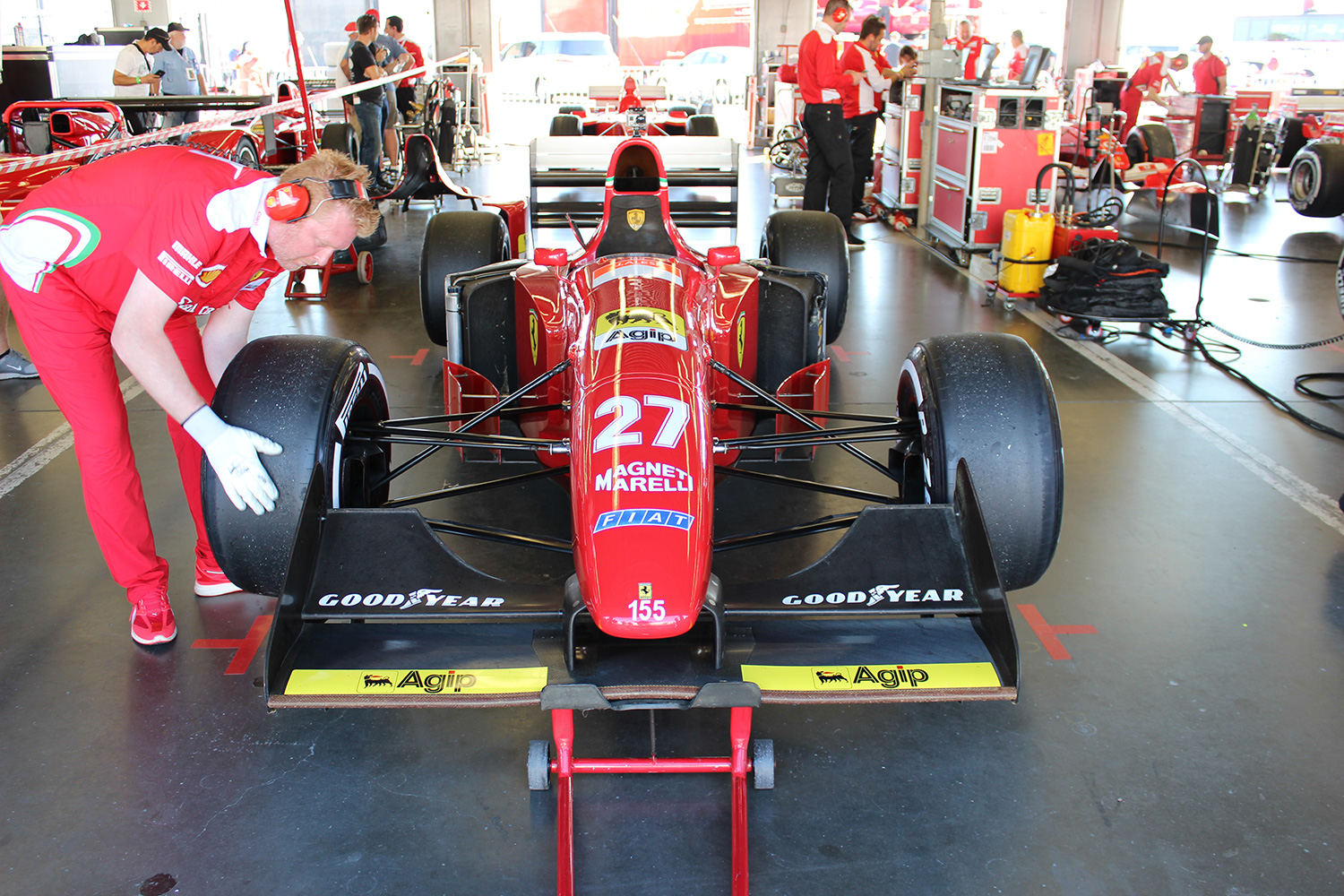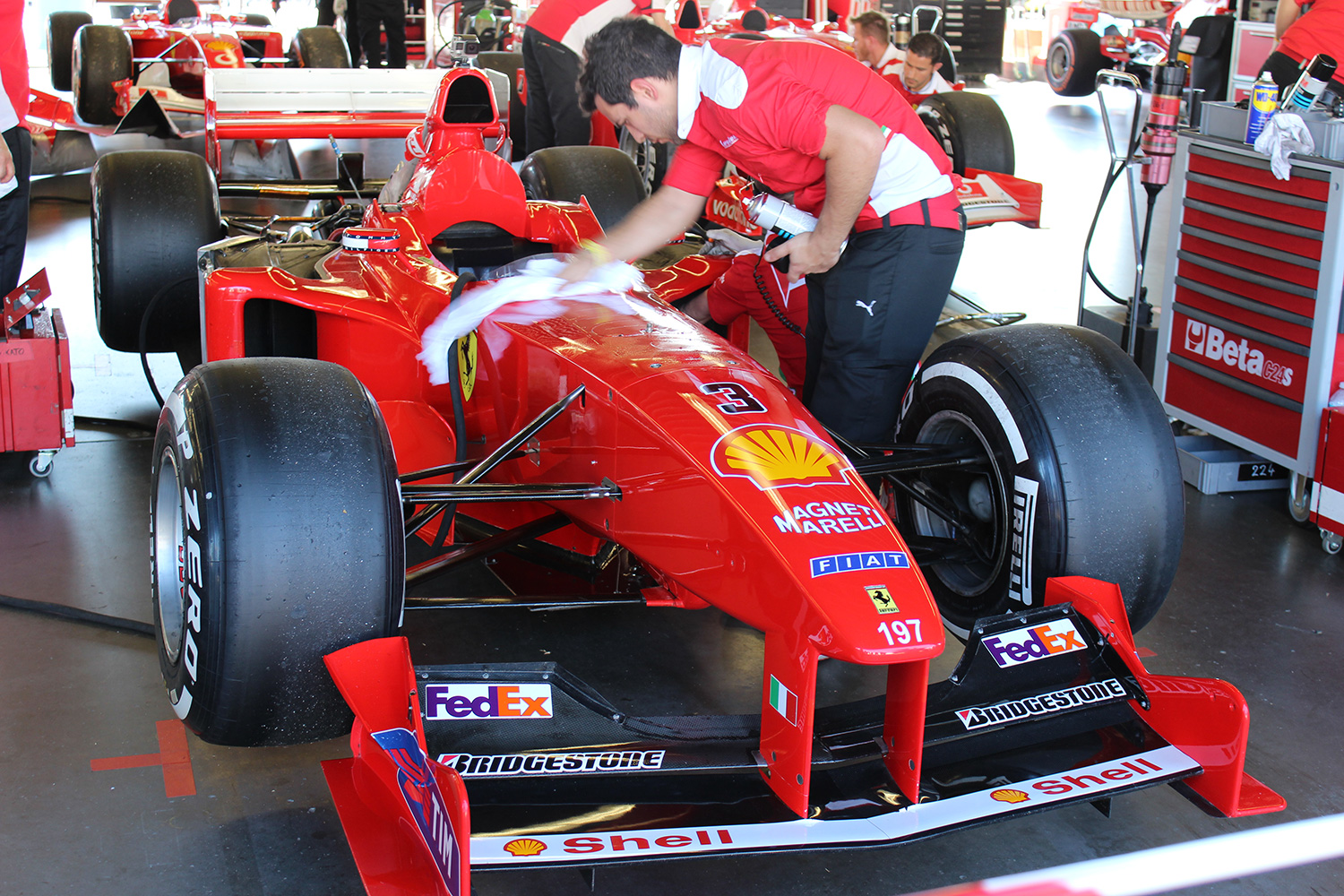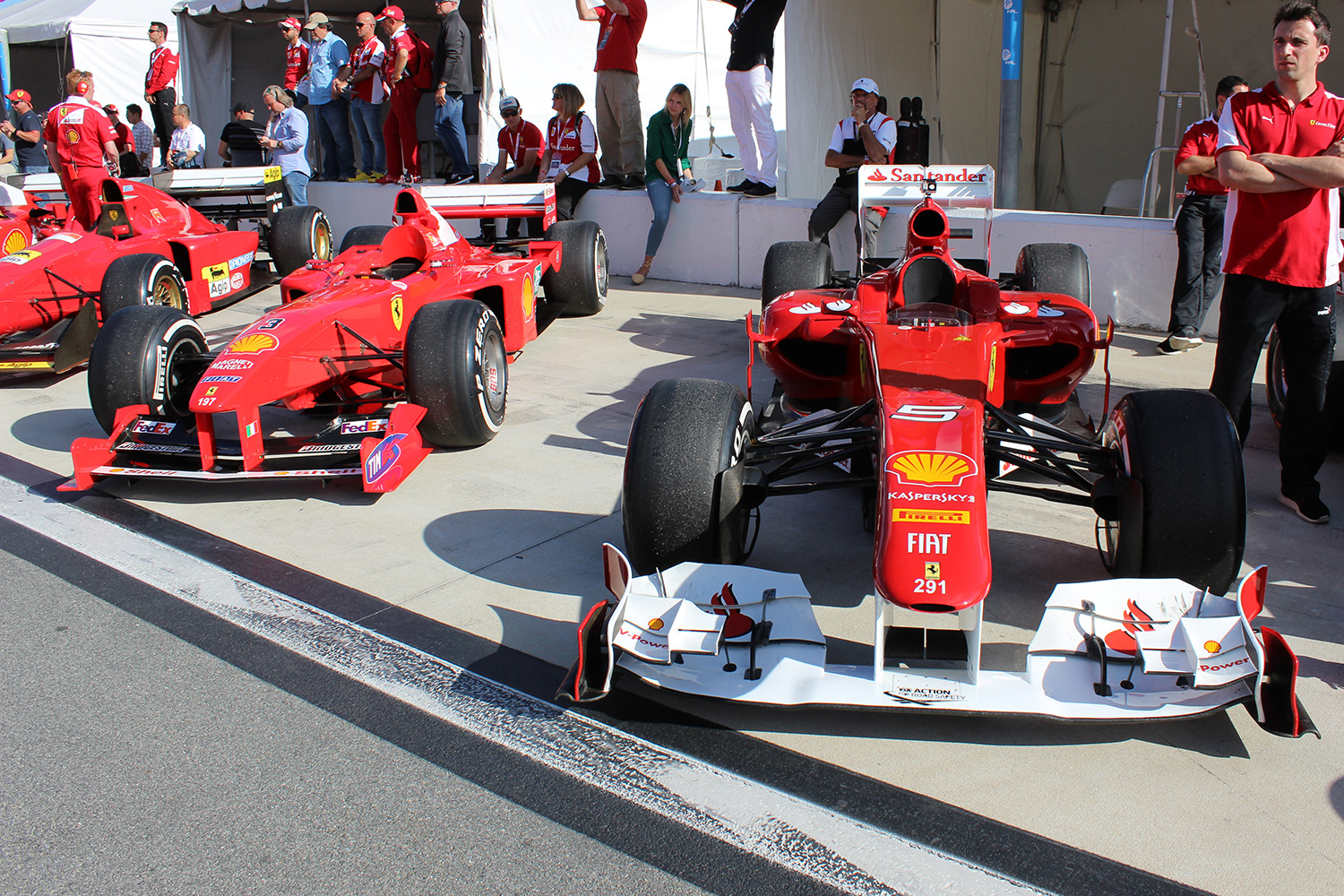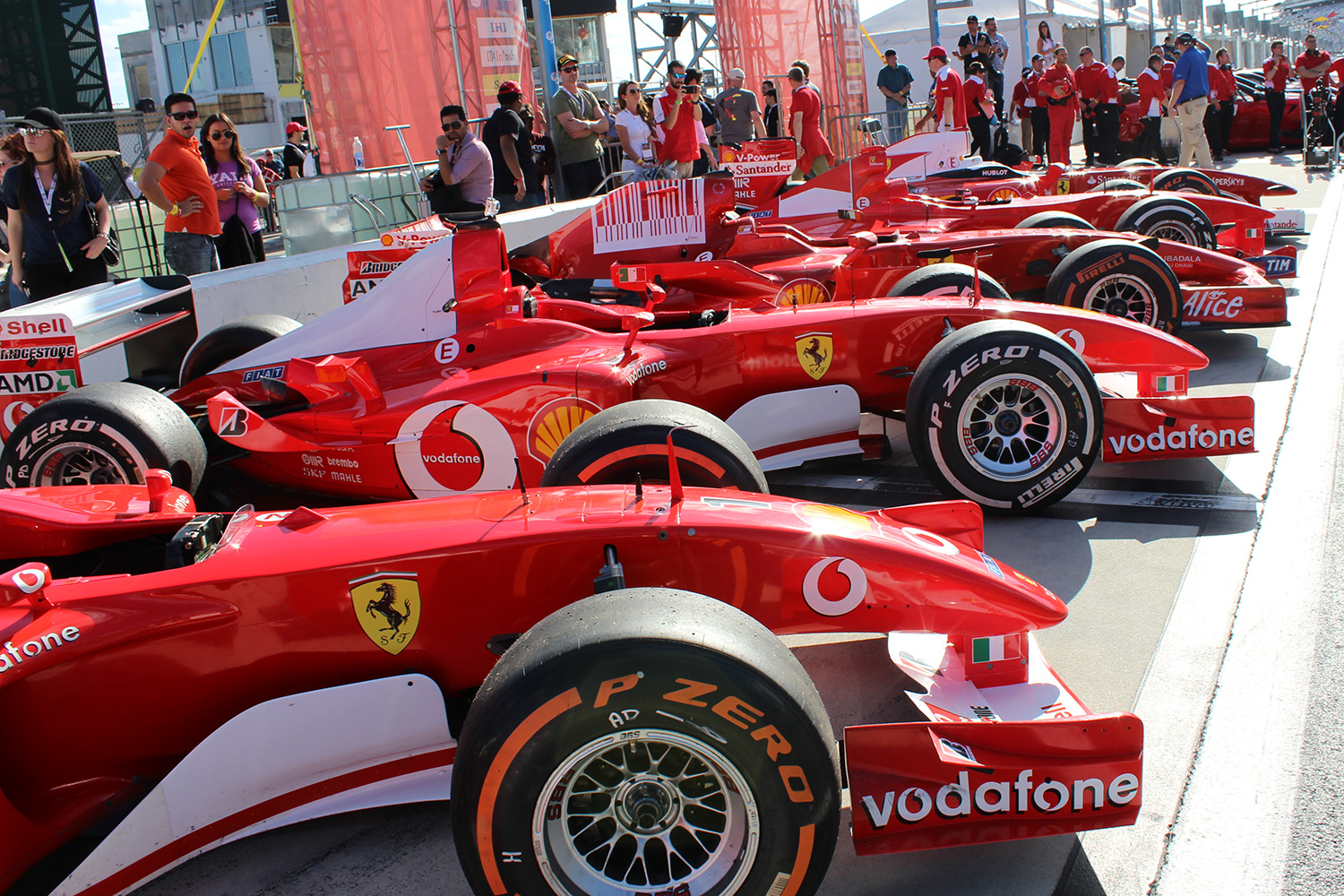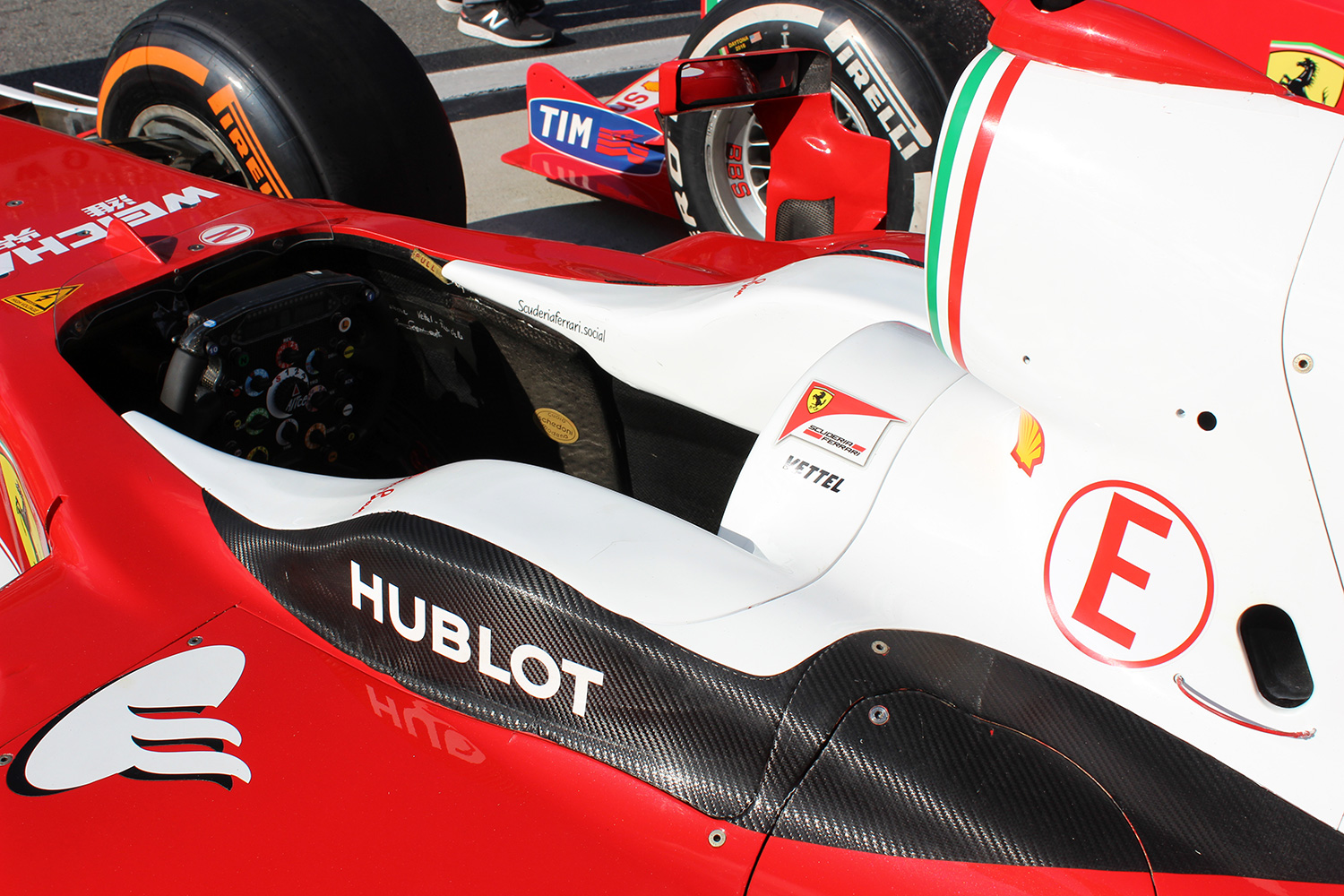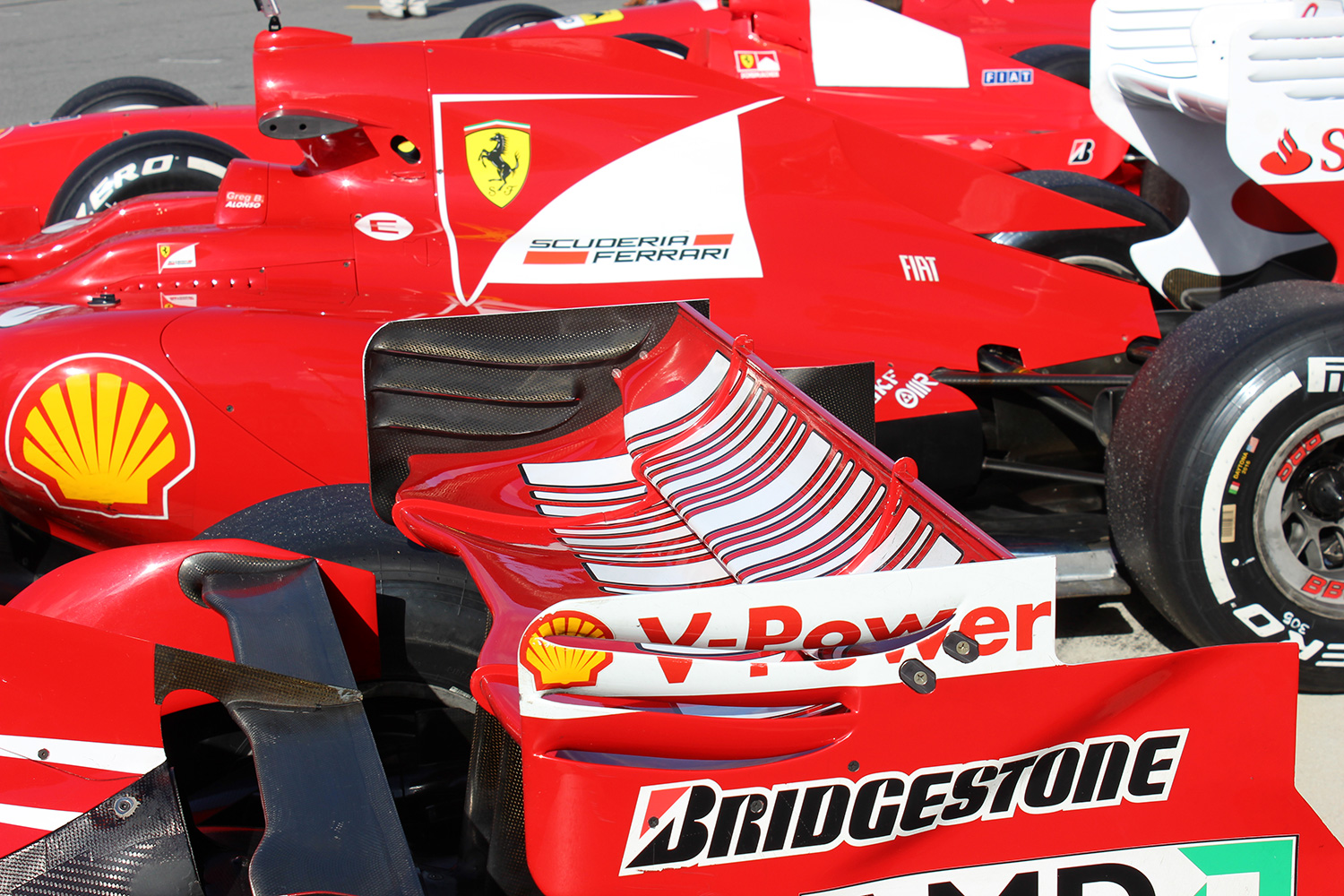I spent a weekend in Ferrari heaven, and I didn’t even fly to Italy. Instead I went to Daytona, Florida.
The legendary car maker communicates very clearly that its cars are to be raced. It’s an obvious message, but one often overshadowed by the brand’s prestige. Ferrari’s legacy turns its modern cars into status symbols and its vintage vehicles into museum treasures — but speak to anyone involved with the company and you’ll learn that a Ferrari left still is almost no Ferrari at all.
So it would make sense that a race-car-making company would provide a venue for its customers to actually race.
Since 1993, the Ferrari Challenge has been that venue: a place for teams to race competition-spec versions of a Ferrari road car — currently the Ferrari 458 Challenge, a full-on race-ready version of the 458 Italia.
Teams race on historic tracks across the globe including Imola in Northern Italy; Laguna Seca near Monterey, California; and Road America in Wisconsin. For the first time in 25 years, the last race in the series, the Finali Mondiali, was held in the United States at Daytona International Speedway. It’s significant since Ferrari’s history with the track spans decades: After Ferrari swept the podium at the 24 Hours of Daytona race in 1967, the 365 GTB was dubbed “the Daytona” by fans. And for the historic event this past December, Digital Trends was trackside as a witness to all the tire-burning glory.
Clienti run the classics
When the competing teams weren’t jockeying for position, Daytona echoed with the screams of Formula 1 cars brought by Ferrari for its Corse Clienti members. Fans have seen these cars put through their paces at the hands of Raikkonen, Alonso, and Vettel; the clienti program allows cars with at least a two-year vintage to be purchased by Ferrari customers to drive on international tracks and live their F1 dreams. Each varies in price depending on age, former driver, and number of wins, but we’re talking millions here, any way you slice it.
Ferrari keeps the cars at its headquarters and then ships them out to the owner’s track of choice along with a full pit crew to manage everything. We spoke to race car driver Marc Gené, who said that Ferrari seeks out customers who want a car to drive, not keep as a show-off set piece. This way the race car gets to stretch its legs, the lucky clienti get to experience drives we can only dream of, and the rest of us get to see classic race cars in action.
Along with F1 cars on display, other classic Ferrari race cars were taken to the track as well as the “XX” cars — the 599XX and FXX-K, the track-only versions of the 599 GTB and LaFerrari, respectively.
Living history on display
Name any Ferrari model and it’s a safe bet one was at the Classiche Concourse
Speaking of classics, as much action happened off the track as well as on at the Finali Mondiali. Brought together by the Ferrari Classiche department, a massive, Ferrari-only concours d’elegance took place in the infields. Name any Ferrari model from the brand’s long history that you can think of and it’s a safe bet that one was there.
The Classiche department is the committee that gives vintage Ferraris their stamps of authentication — well, a red booklet, specifically. Anyone who thinks they’ve got their hands on a real Ferrari can take it to these guys, who will pour through archived documents, photos, and more to verify that the car is the real deal. They can even take a sample of the steel and analyze the metallurgy to make sure it matches what the original car was made from. The best part? To make your classic Ferrari bonafide, it has to run.
Not even the classics get to sit still.
When the Mondiali concluded, the drivers and clienti were invited to a large tent where a trophy ceremony was held for the drivers, MC’ed by legendary motorsports commentator Bob Varsha. Formula 1 champions and current drivers for Ferrari Sebastian Vettel and Kimi Raikonnen joined F1 team principal Maurizio Arrivabene and FCA CEO Sergio Marchionne on stage to reveal the Ferrari 488 Challenge, the car that will replace the 458 cup car for the following season. Shortly after, the last production LaFerrari was auctioned off for a whopping $7 million. The proceeds will go to the National Italian American Foundation’s Earthquake Relief Fund to benefit the victims of the 6.0-magnitude earthquake that struck Central Italy in August of last year.
Formula 1 cars scream at Daytona
The following morning, The Formula 1 cars returned to the track for one last demonstration. As an added bonus, Vettel and Raikonnen hopped back into the seats of cars they used to occupy, sending them screaming around the course. It was Ferrari’s way of closing out the Mondiali with one hell of a bang.
As the sun set, and the track lights sparked on, Ferrari fans and owners packed up their cars and made their way home. The Finali Mondiali was over, and the track was empty. Well, almost. I stuck around to take to the track. I couldn’t let everyone else have all the fun, after all.
Some experience drives we can only dream of; the rest of us see classic race cars in action.
My ride was the 488 Italia, a car I drove at Ferrari’s Corso Pilota driving course. I knew my way around, having clocked some time at Daytona before in the Audi R8 V10 plus. But this time, it was night and the 488 is a more delicate beast than the Audi.
Set in race, I took off into the night, my first turns taking me from the pit lane to the infield of Daytona’s road course, the configuration used in the Rolex 24-hour race, which would take place a few short weeks after the Finali Mondiali. Incidentally, the 488 GTE went on to take third place in the GT-Le Mans class in that race.The first section tests the car’s agility between the high-speed runs on the curved embankment. Immediately, the car’s sharp response and turn-in made itself apparent as I guided it around the kinks and bends of the infield. From there, I was lined up to shoot up the first banked corner, which towered over me like a cement tsunami.
The 488 has a 3.9-liter twin-turbo V8 that cranks out 660 horsepower. That powers finds its way to the rear wheels by seven-speed dual clutch transmission, and trust me when I say that it’s all ready to be used. As such, climbing the high-speed embankment is all about finding traction on the approach. The mid-engine sports car is poised, but even with the drive assists on — which are barely engaged in Race mode — the 488 isn’t designed to make me look good. I’ve got to work for it.
There’s plenty of feedback coming through the steering wheel and seat, but if I pushed it to the limit, the margin of error is thin: push too hard and the car will let me know it. Wield the Ferrari properly, however, and the results are spectacular. The 488 cuts through corners like a scalpel and drivers responding to the feedback are rewarded with smooth, fast exits. There was so much more that the car could give when I was on the back straight, but I had to break hard to maneuver in and out of the track’s bus stop chicane. Doing so felt like nailing a succession of three-point basketball shots, along with the upwelling of accomplishment.
Ready for next year
With the lights shutting down at Daytona, Finali Mondiali concluded. Ferrari fans, owners, and drivers went home. As I did, I ruminated on my takeaway from the experience, concluding that the spirit of racing and competition is very much alive thanks to Ferrari’s community.
Cars are tricky products to nail down, devices of convenience as well as sources of entertainment. With the progressive shift of cars becoming more autonomous and economical, it’s easy to think that the thrill of driving has diminished. Displays like the one at Daytona proved this is far from the case.
Ferrari Challenge will kick off in Abu Dhabi in April for the 2017 season, starting the fun all over again while racing the new 488 Challenge car.
